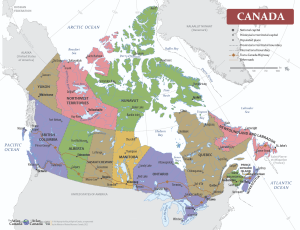1.4 Controlled Drugs and Substances Act (CDSA)

Health Canada
Health Canada is responsible to evaluate the safety, efficacy and quality of all health products before giving a license or authorization for products to be sold in Canada. Manufacturers need the authorization and/or license from Health Canada to sell a health product in Canada.
NAPRA and the National Drug Schedules
Once Health Canada has authorized a drug for sale in Canada, and whether a prescription is necessary for sale, then NAPRA’s role in the drug scheduling process occurs. Health Canada authorizes all drugs and classification of any new health product for the Canadian market. NAPRA does not have any role or authority in this process.
Individual provinces and territory prior to 1995 had its own systems to determine the conditions of sale for non-prescription drugs in Canada. This lead to a wide variability in the way all drugs were sold. Currently the federal government determines the need for a prescription and certain conditions of sale, but all provincial/territorial governments have the ability to further specify the conditions of sale of drug products.
Drug Scheduling in Canada

A proposal for a national drug scheduling model was created in 1995 by the National Association of Pharmaceutical Regulatory Authorities so that drugs could be sold across the country with consistent regulations. It is now the National Drug Schedules Program (NDS) (1)
The program consists of:
- 3 schedules
- four categories of drugs
- established factors for each schedule
- a standard process for scheduling
- National Drug Scheduling Advisory Committee (NDSAC) (2) (scheduling recommendations)
All narcotics and controlled substances are scheduled according to a regulatory framework under the Narcotic Control Regulations within the Controlled Drugs and Substances Act (CDSA)(3) are scheduled according to a regulatory framework.
Drug Scheduling Process
The drug scheduling process begins when a drug scheduling submission from a pharmaceutical company is submitted to NAPRA. The National Drug Scheduling Advisory Committee reviews the drug scheduling submissions and formulates drug scheduling recommendations. NAPRA’s By-law No. 2 and Rules of Procedures outline the specific process that must be followed for each step of the drug scheduling review. Drug scheduling recommendations embodies a “cascading principle”, where drugs are assessed against specific scheduling factors.
The drug is first assessed through Schedule I, and if the drug factors apply, then the drug remains in that schedule. If the drug does not apply then the drug is assessed against, Schedule II factors and then Schedule III if needed. If the drug does not meet Schedule I, II or II then it becomes “Unscheduled” (the fourth category). Occasionally Health Canada has classified as a product in non-prescription product but NAPRA will place it in Schedule I.
This could occur because of the NAPRA policy for drugs not reviewed process, due to a range of factors to be considered by the expert advisory committee. The provinces and territories for non-prescription drugs can add additional conditions of sale for non-prescription drugs, but they cannot be less restrictive than federal legislation.
Health Products and Food branch of Health Canada determines which health products will be marketed in Canada, and whether or not they require prescriptions for consumer use. This list of products includes drugs, medical devices, disinfectants, and sanitizers with disinfectant claims. Without authorization from Health Canada, a drug or drug accessories manufacturer is not permitted to sell its products within the country.
Once Health Canada has determined whether or not a particular drug can be sold within Canada, the assigned a Drug Identification Number (DIN), and then the individual provinces, territories, and NAPRA, under advisement from the NDSAC make decisions regarding where the product can be sold.
Canada’s National Drug Schedules
The NDS program consists of three schedules and four categories of drugs.
Schedule I drugs require a prescription for sale and are provided to the public by the pharmacist following the diagnosis and professional intervention of a practitioner. The sale is controlled in a regulated environment as defined by provincial pharmacy legislation. (Heroin, cocaine, opium, oxycodone, fentanyl, morphine, MDMA, Ketamine, methamphetamine)
Schedule II drugs, while less strictly regulated, do require professional intervention from the pharmacist at the point of sale and possibly referral to a practitioner. While a prescription is not required, the drugs are available only from the pharmacist and must be retained within an area of the pharmacy where there is no public access and no opportunity for patient self-selection.
Schedule III drugs may present risks to certain populations in self-selection. Although available without a prescription, these drugs are to be sold from the self-selection area of the pharmacy which is operated under the direct supervision of the pharmacist, subject to any local professional discretionary requirements which may increase the degree of control. Such an environment is accessible to the patient and clearly identified as the “professional services area” of the pharmacy. The pharmacist is available, accessible and approachable to assist the patient in making an appropriate self-medication selection. (LSD, psilocybin and psilocin (magic mushrooms), mescaline (peyote and San Pedro cactus), and DMT (found in many plants, but most commonly an ingredient in ayahuasca).
Schedule IV – (Benzodiazepines, Salvia, Khat)
Unscheduled drugs can be sold without professional supervision. Adequate information is available for the patient to make a safe and effective choice and labeling is deemed sufficient to ensure the appropriate use of the drug. These drugs are not included in Schedules I, II or III and may be sold from any retail outlet.
Source: Outline of the Schedules by NAPRA schedules and four categories of drugs
For more information regarding Prescription Drug List:
- Controlled Drugs and Substances Act (S.C. 1996, c. 19)
- Health Canada Prescription Drug List
- Health Canada website
- National Drug Schedules (NDS) Updates (Dec 2021) – NAPRA
- Notices of Changes to the Prescription Drug List – Government of Canada
- Drug Products RSS Feed – Government of Canada
- rules in each particular province or territory.
ATTRIBUTION: This chapter is not covered by the adaptation statement, it is an original work.
References:
- Jones, T. (2022). What Are the National Drug Schedules (NDS)? – NAPRA. NAPRA. https://www.napra.ca/national-drug-schedules/national-drug-schedules-program/what-are-the-national-drug-schedules-nds/
- Jones, T. (2023). National Drug Scheduling Advisory Committee (NDSAC) – NAPRA. NAPRA. https://www.napra.ca/national-drug-schedules/national-drug-scheduling-advisory-committee-ndsac/
- Legislative Services Branch. (2023, January 14). Consolidated federal laws of Canada, Controlled Drugs and Substances Act. https://laws-lois.justice.gc.ca/eng/acts/c-38.8/
- Jones, T. (2023a). NDS Policies – NAPRA. NAPRA. https://www.napra.ca/national-drug-schedules/national-drug-schedules-program/nds-policies/

